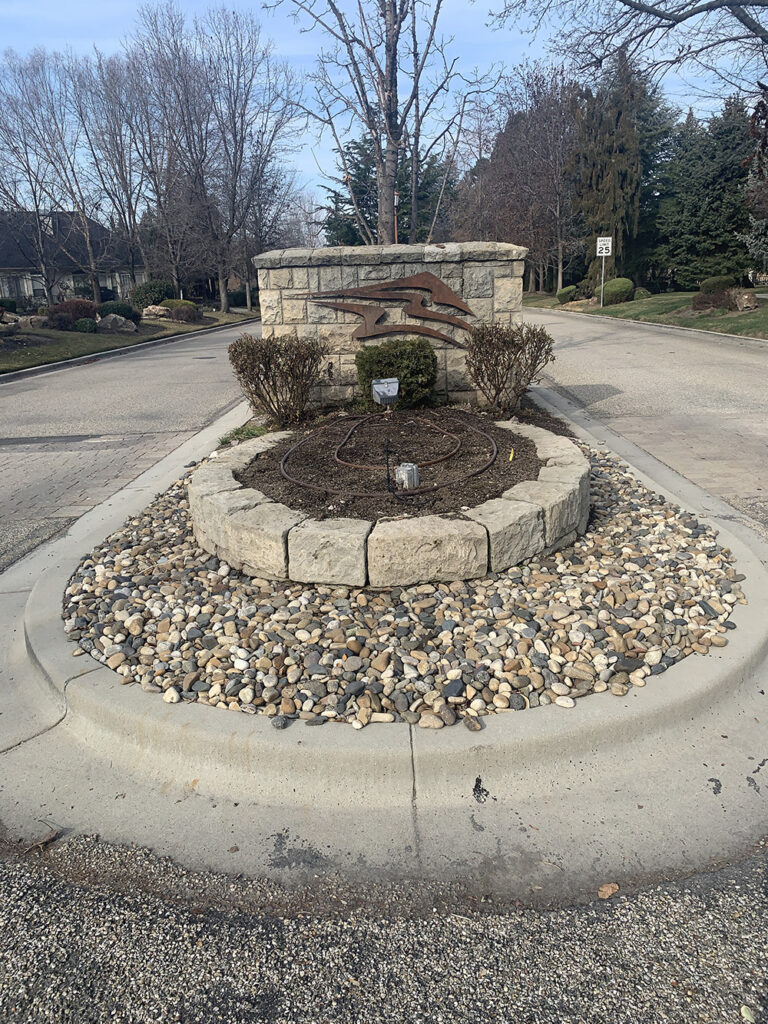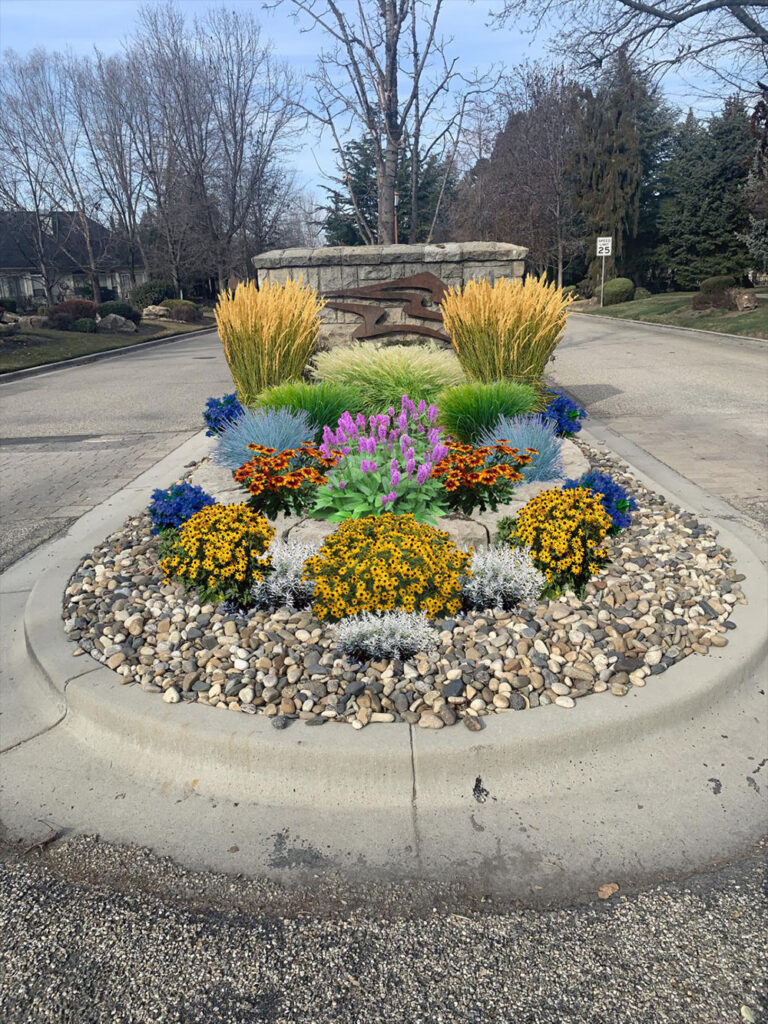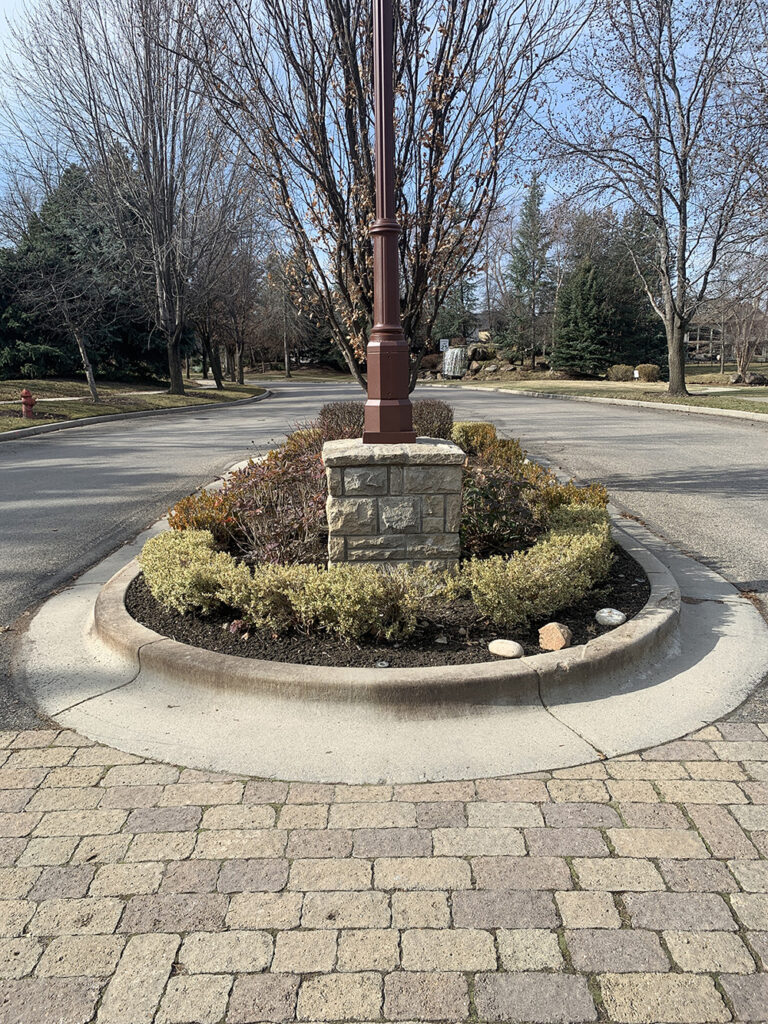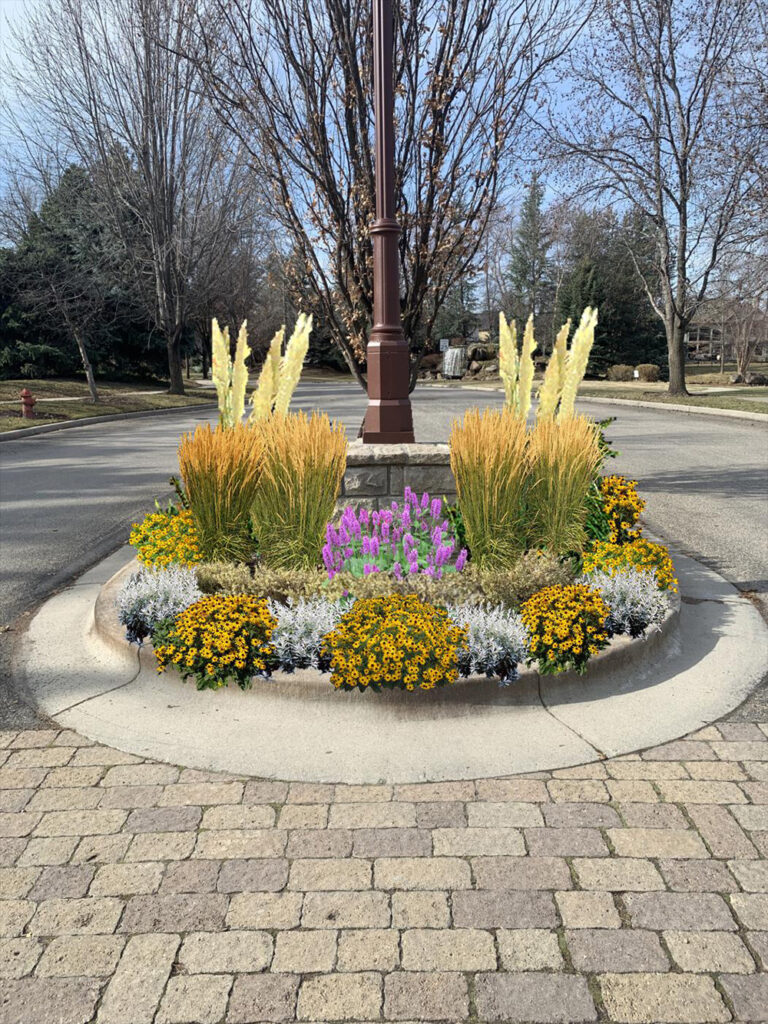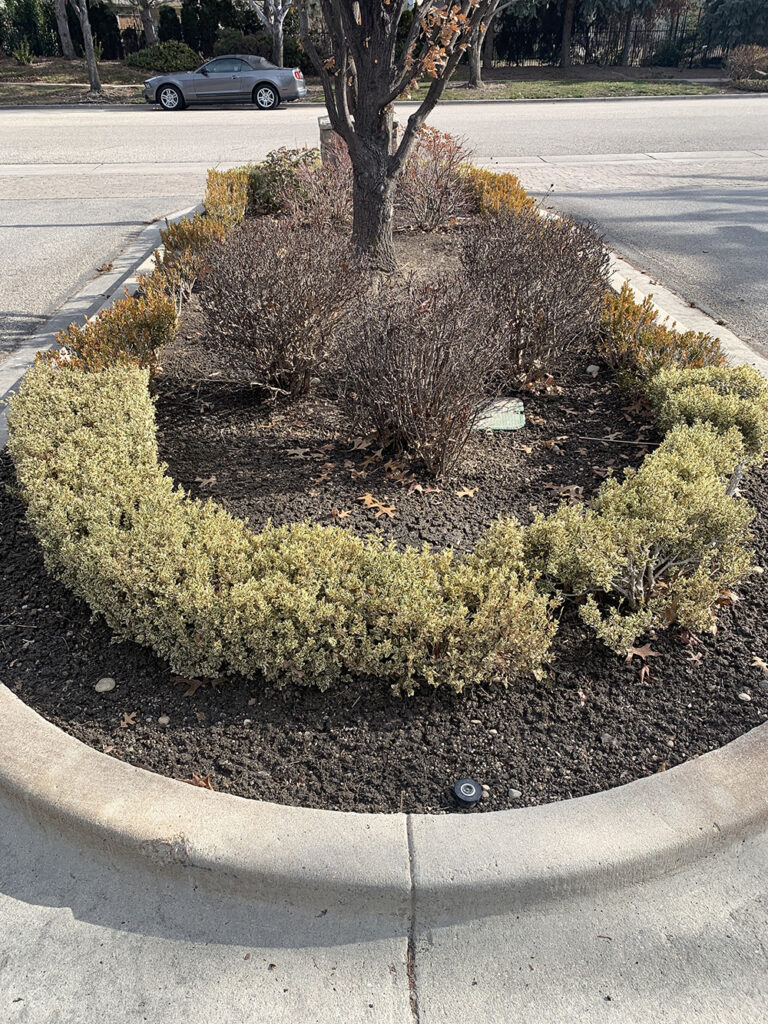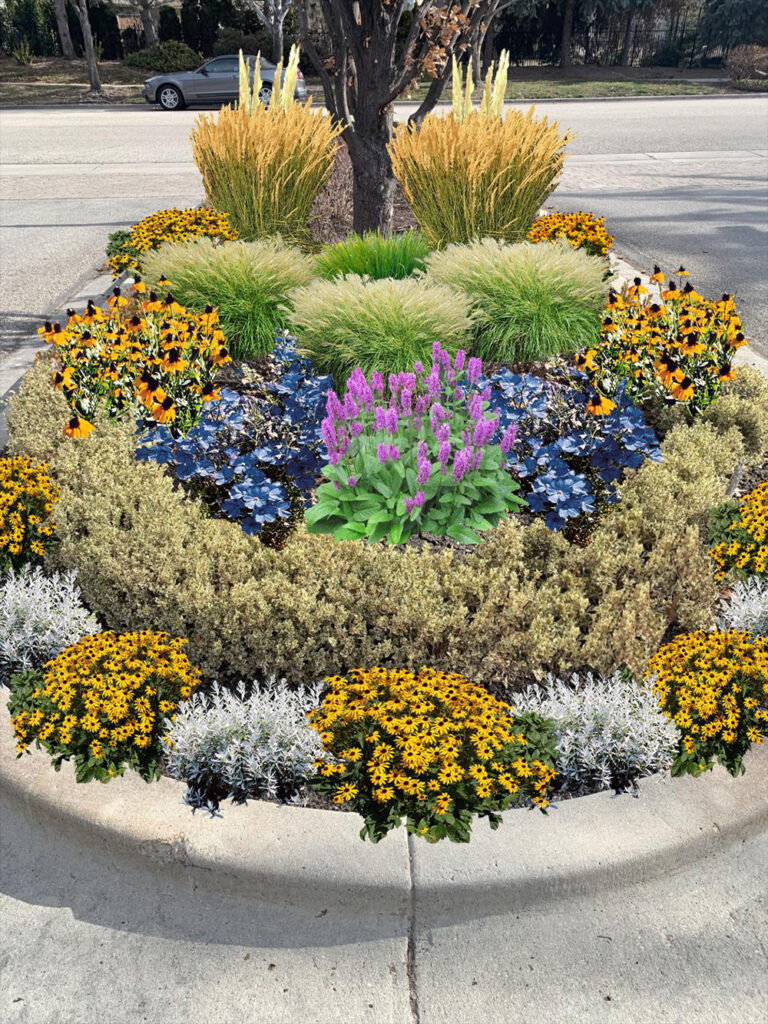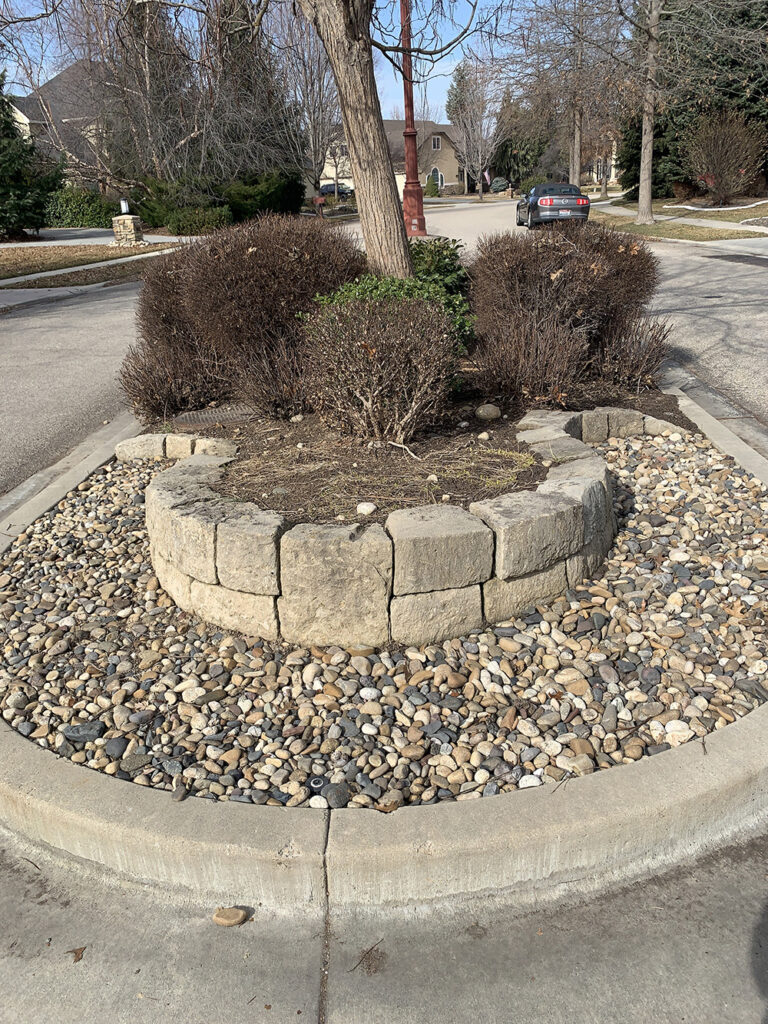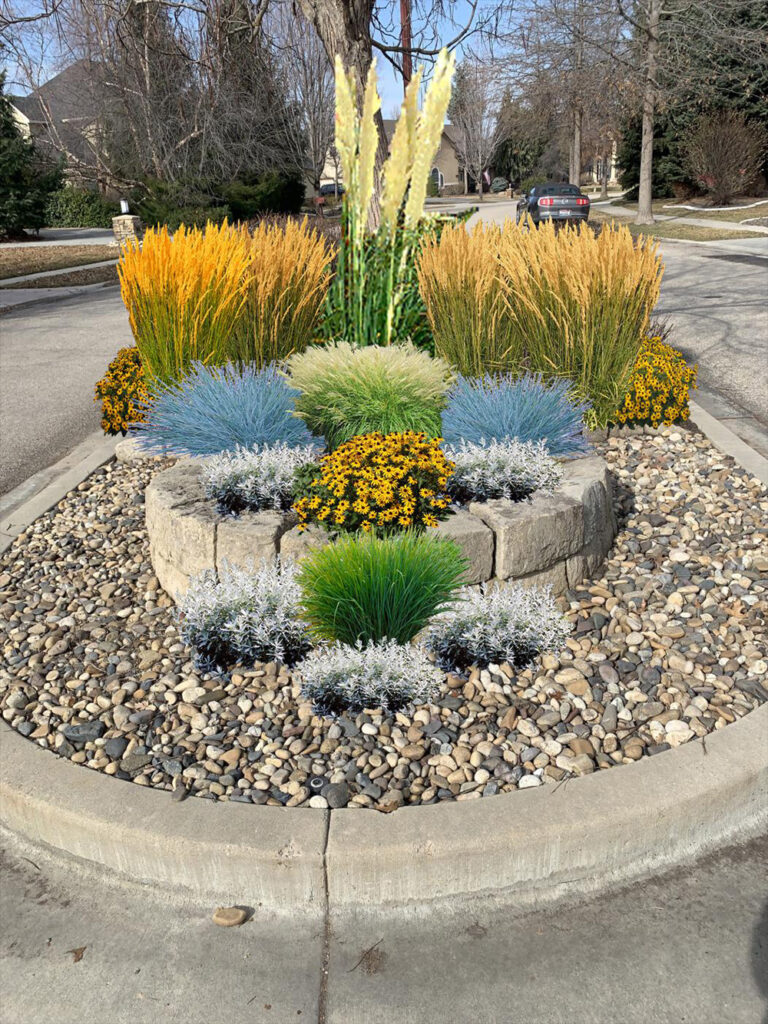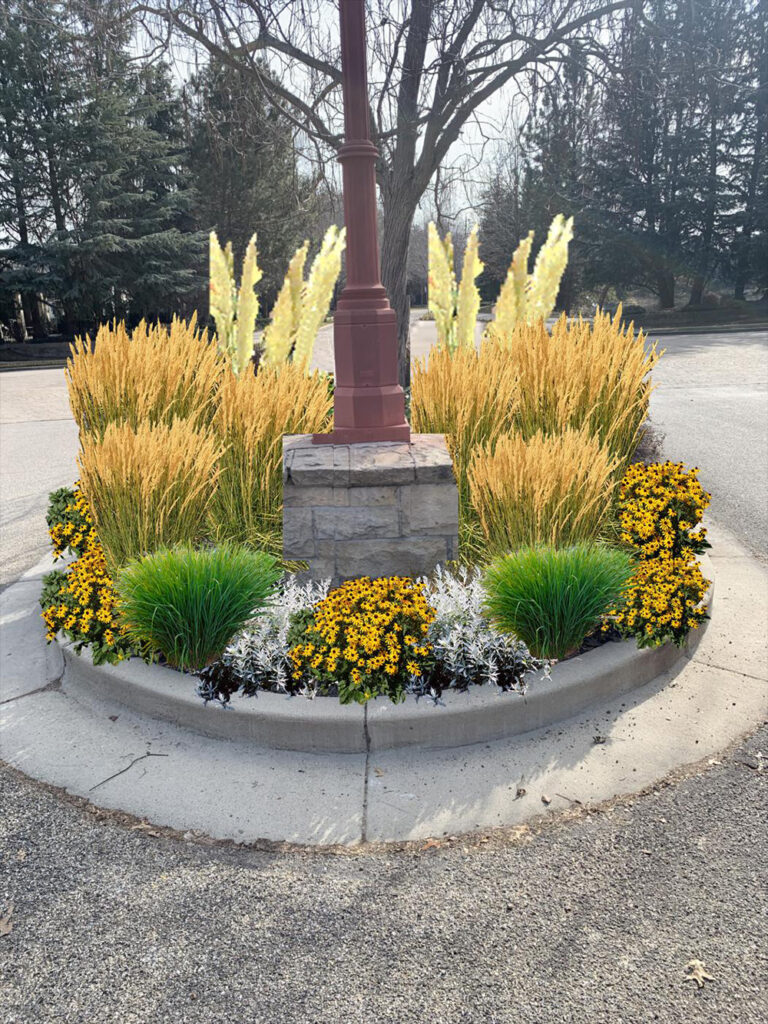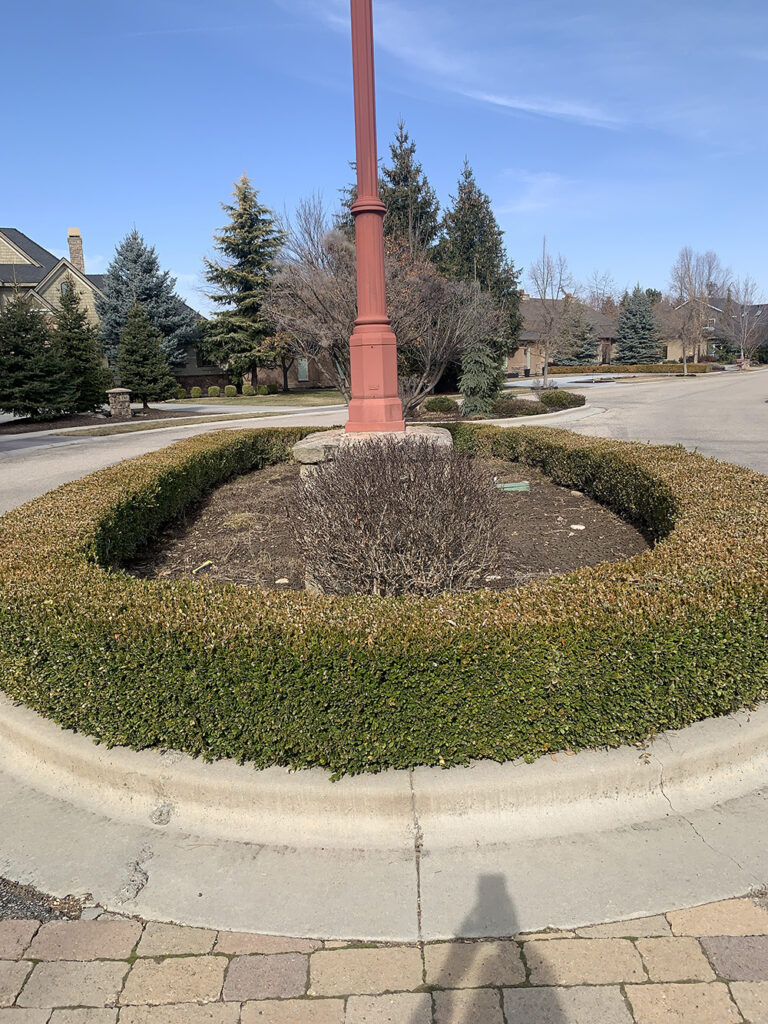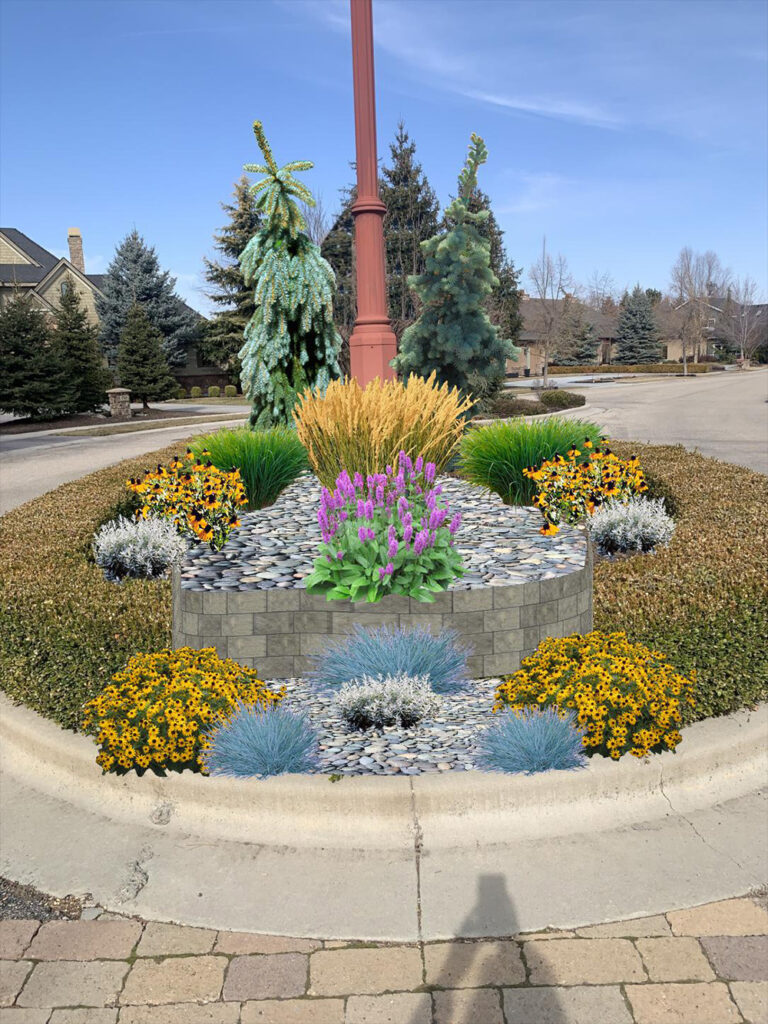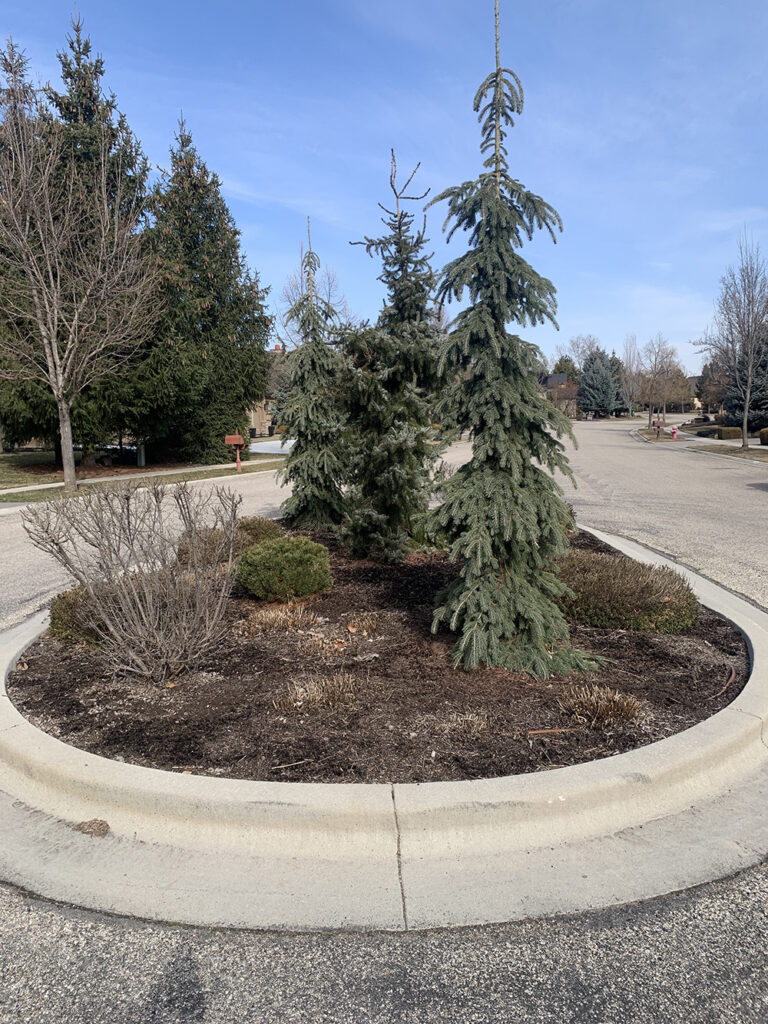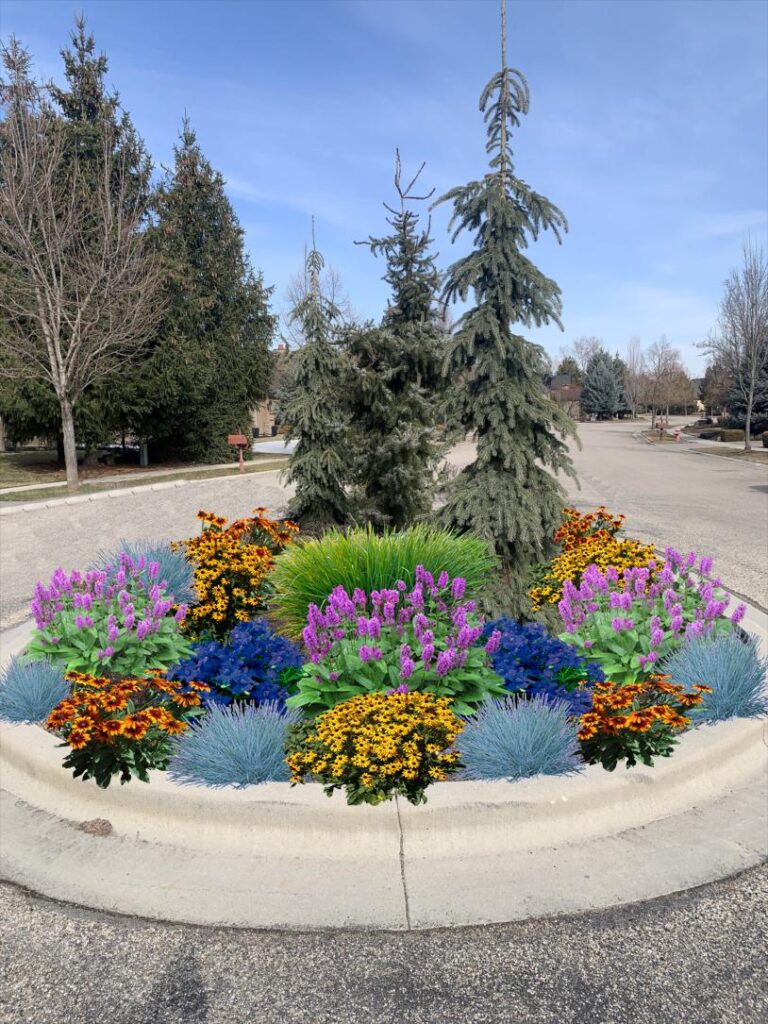Clients requested designs for the Two Rivers HOA renovation of their community’s islands. It was also requested that we include grasses and perennial plantings that would be easy to maintain. The shrubs selected were based on availability, hardiness, and drought tolerance.
Concept plantings included: Artemisia (Ludoviciana ‘Valerie Finnis’) is an outstanding silver-leaved perennial for any sunny border. This selection spreads less quickly than the older ‘Silver King’, with a slightly wider leaf that holds up well to summer heat and humidity. Plants form a bushy, upright mound, with clusters of creamy flowers in July. Trimming back hard after blooming will rejuvenate the foliage. Drought tolerant, once established.
Black-eyed Susan (Rudbeckia ‘American Gold Rush’) is resistant to Septoria leaf spot. It produces thinner and hairier leaves and shows no signs of the fungus even in wet, humid conditions. Dome-like golden yellow flowers with black centers are produced heavily from July to September, with some color until frost. Attracts butterflies, songbirds, and bees.
Black-eyed Susan (Rudbeckia fulgida var. fulgida) provides foliage that is shiny and heat tolerant. Slightly smaller blooms. Seedheads have good winter interest. A terrific choice for mass planting, combining especially well with ornamental grasses. Removing faded flowers regularly will greatly increase the blooming time.
Dwarf Coneflower (Rudbeckia fulgida ‘City Garden’) is a compact selection, similar in color but shorter than the well-known ‘Goldsturm’. It forms a low mound of green leaves, bearing a long late-summer display of golden-orange daisies with a brown center. Perfect for edging sunny borders, using in mixed containers or for massed plantings. Attractive to butterflies.
Anise Hyssop (Agastache Blue Boa) features long, deep violet-blue flower spikes that are wide and extremely showy. Upright, clumping habit and bright green, fragrant foliage. Attractive to hummingbirds and butterflies. Drought tolerant when established.
Feather Reed Grass (Calamagrostis acutiflora ‘Karl Foerster’) performs well in a wide range of climates, remains attractive for months on end, and is not invasive in any way. Clumps are strongly upright, with dark green leaves. Soft feathery green plumes appear in summer, maturing into stiff wheat colored spikes, which last into winter.
Pampas Grass (Cortaderia selloana) is one of the most spectacular ornamental grasses, forming a large evergreen clump with very tall plumes of white flowers in autumn that last for months.
Blue Fescue (Festuca glauca ‘Beyond Blue’) provides displays of colorful, grassy foliage. This selection forms a dense tuft of bluer-than-blue leaves that remain blue all season. Spikes of tan flowers in early summer. Excellent for mass planting, edging, or in the rock garden. should be trimmed back in late winter right to the base.
Dwarf Fountain Grass (Pennisetum alopecuroides ‘Burgundy Bunny’) is a miniature version which forms an upright clump of narrow, green leaves bearing small, tufted, cream flower plumes in late summer. The leaves show red color in summer but by fall are completely red, lasting until frost. Excellent on borders, especially when mass planted. Plants provide interest in the winter garden. Old foliage should be cut back to the ground in March. Drought tolerant once established.
Maiden Grass (Miscanthus sinensis ‘Dixieland’) is a graceful, upright mound of leaves boldly striped lengthwise with green and creamy white. Soft-pink plumes appear in late summer through the autumn, maturing into silvery seedheads. Similar to ‘Variegatus’ but more compact, sturdy and self supporting. The foliage dries and turns a light tan shade for the winter. Cut back to 4 inches in late winter or early spring.
Additional plants included: Salvia, Delphinium, and Lobelia.
